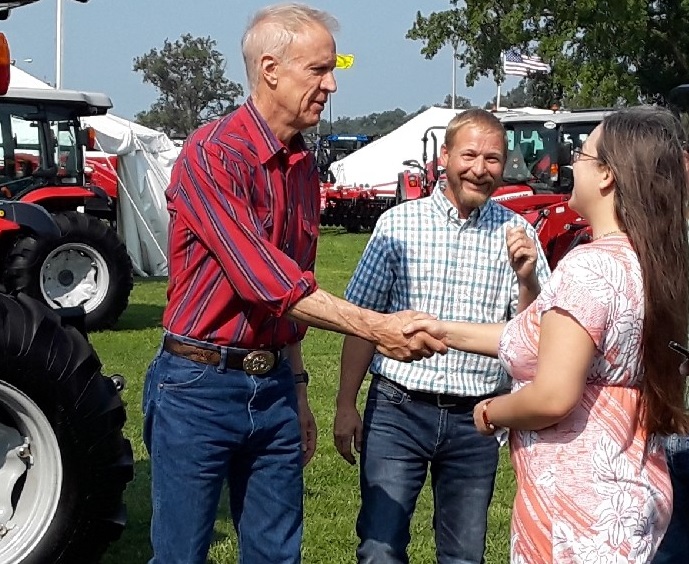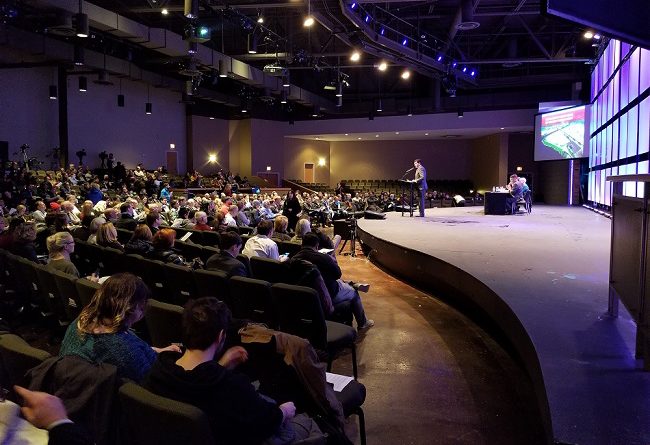Illinois Hemp, Lincoln Yards Controversy
Podcast: Play in new window | Download (Duration: 1:44:43 — 48.3MB)
Subscribe: Apple Podcasts | Spotify | Android | iHeartRadio | Podchaser | Email | TuneIn | RSS | More
A misunderstood plant makes a comeback
(November 25, 2018) Do you follow Illinois hemp futures? No? Okay, we excuse you for missing this interesting item in the August newsletter from the Illinois Stewardship Alliance.

On Saturday, August 25th, Governor Bruce Rauner signed legislation that will help Illinois farmers, the state economy, and the environment by allowing the Illinois Department of Agriculture (IDOA) to license farmers to grow industrial hemp.
Illinois Stewardship Alliance and Illinois Farmers Union initiated the hemp bill in 2016, and collaborated with the Illinois Environmental Council and Illinois Farm Bureau in a coalition of farm and environmental interests to bring hemp back to Illinois, which was once a lead producer of hemp during wartime efforts in the 1940s. The governor’s signature on the bill today now gives Illinois the opportunity to reclaim that position.
Mr. Rauner will soon be a historical footnote in Illinois, but it looks as though hemp growing will move forward. And about time, as Illinois is the 35th state to get on board allowing commercial hemp production. The next steps involve moving the new hemp bureaucracy forward. The governor’s signature started a 120 day clock for finalizing hemp growing rules in Illinois.
Rulemaking simply is the state government’s process of assigning state agencies, such as the ag department, to create administrative law through the adoption of regulations.
Before this process started, ag department staff met in early October with interested parties to collect their input. This included Jeff Cox of the IDOA’s Bureau of Medicinal Plants; Molly Gleason of the Illinois Stewardship Alliance, the group which pushed for the bill allowing hemp production; and representatives from Farm Bureau, Illinois Crop Improvement Association, Illinois Environmental Council, Illinois Farmers Union and Illinois Industrial Hemp Association.
The timeline, as Gleason and Cox described it, calls for a draft rule publication and review in late October to early November, then a 45-day public comment period, opportunity for changes, a second publication, review by the state legislative rules commissions and then finalized rules would be shared by the 120-day deadline, Dec. 23.
In some circles, hemp is considered somewhat of a wonder plant.
Not only can hemp be used for an astonishing number of products, its net environmental benefit is impressive. Among the more salient features, hemp grows in a variety of climates and soil types, is naturally resistant to most pests, and grows very tightly spaced allowing it to outcompete most weeds. A natural substitute for cotton and wood fiber, hemp can also be pulped using fewer chemicals than wood because of its low lignin content. Its natural brightness can obviate the need to use chlorine bleach.
The Illinois Stewardship Alliance writes, “There are at least 25,000 different products that could be made from hemp, from plastic alternatives to “hempcrete” and particle board, food, cosmetics, rope, clothing, and much more, according to North Dakota State University research.”
But, as of 2013, only 19 states had passed “pro hemp” legislation. And if you don’t know the reason why, you probably have a very different impression of the plant Cannabis sativa from that of your parents or grandparents.
Botanically, the genus Cannabis is composed of several variants. Although there has been a long-standing debate among taxonomists about how to classify these variants into species, applied plant breeders generally embrace a biochemical method to classify variants along utilitarian lines. Cannabis is the only plant genus that contains the unique class of molecular compounds called cannabinoids. Many cannabinoids have been identified, but two preponderate: THC, which is the psychoactive ingredient of Cannabis, and CBD, which is an antipsychoactive ingredient. One type of Cannabis is high in the psychoactive cannabinoid, THC, and low in the antipsychoactive cannabinoid, CBD. This type is popularly known as marijuana. Another type is high in CBD and low in THC. Variants of this type are called industrial hemp.
In the 1930s, the United States launched a war against marijuana, and industrial hemp was the baby that got thrown out with the bathwater. The last commercial crop of hemp grown in the United States was in Wisconsin in 1958, and it stayed that way until the State of Colorado introduced a pro-hemp bill in 1995. With the passing of recreational marijuana use laws in many states, attitudes have changed drastically, and one of the beneficiaries has been the domestic hemp industry.
Part of the confusion is caused by binomial nomenclature, the system created by Carl Linnaeus to name all living things. Both marijuana and hemp are the same species–Cannabis sativa–yet they have very different properties.
…in most western countries industrial hemp is distinguished from marijuana on the basis of THC (the chief intoxicant in marijuana) content, which allows the growing of industrial hemp for fiber and seed. Regulations in the E.U. and Canada (31 countries currently grow industrial hemp) limit THC levels in hemp flowers to 0.2 percent and 0.3 percent, respectively, and prevent attempts to camouflage marijuana in hemp fields. Comparatively, THC levels in marijuana flowers are generally between 3 percent and 15 percent.
I can’t understand why scientists didn’t separate those two plants into different species decades ago. I suspect there’s a reasonable explanation somewhere, but I don’t have time to look for it. However, that confusion has allowed the production of hemp to be blocked for more than sixty years. If you look through the marijuana and hemp myths, you should note that
The THC levels in industrial hemp are so low that no one could get high from smoking it. Moreover, hemp contains a relatively high percentage of another cannabinoid, CBD, that actually blocks the marijuana high. Hemp, it turns out, is not only not marijuana; it could be called “antimarijuana.”
However, hemp has the potential to be a valuable cash crop right here in Illinois, and farmers are already lining up to put it in their fields. One of those farmers is Rachel Berry in Princeton, Illinois, who helped to create the Illinois Industrial Hemp Association last year. She lobbied for months for the passage of the Illinois bill. She told me that it’s “a once in a lifetime opportunity to get in on a new cash crop” and she now wants to make sure that the new regulations work for small farmers.
“A lot of the bills that we look at in other states, they’re not super focused on small farmers, and there are a lot of small farmers around here that want a piece of this hemp pie. We want solutions to the amount of pesticides and fertilizers that we have to spray. We want solutions to you know the prices of corn and soy being really, really low.”
Another farmer who plans to jump into hemp production is Chad Wallace of Oak Tree Farm in Ashland, Illinois. He is ecstatic about passage of the Illinois law.
“I could not be happier! I’ve spent the last couple of years learning about industrial hemp from other farmers, and even more recently attended a hemp field day with about 100 farmers in Wisconsin where they are already in production. From what I’ve seen, I think hemp could be a great fit for my farm and many others across Illinois, and it opens up doors for all kinds of new manufacturing possibilities for our state. I’m excited to get started. ”
Rachel Berry and Chad Wallace join us on the show today, along with farmer Ryan Butzow from Butzow Family Farm in Onarga in Iroquois County. He says that CBD oil really helped his ailing grandma and he’s driven to see IL growers have a shot in the market that farmers in other states already have.
In addition, Liz Moran Stelk, Executive Director of the Illinois Stewardship Alliance, will help navigate us through the policy maze of enacting this new law. We’ll also talk to her about a couple of other issues that have been championed by the group and that are moving forward.
Will the new Lincoln Yards be “Chicago Parking Meter Fiasco 2.0”?
Imagine taking a city with the population of, oh, say Oak Park Illinois (about 50,000) and dropping it into the middle of one of the largest cities in the world, say Chicago. Except without the trees. And without the open spaces.
That might be what’s about to happen with the speeding and perhaps runaway train called Lincoln Yards. It is a transformation of what is now called the North Branch Industrial Corridor, and it could result in 70-story skyscrapers, 5,000 homes, 23,000 jobs…and a lot of congestion, if it isn’t done right. One of the crucial battles being fought right now is about how much open space will be included in the new neighborhood. The developers and the City of Chicago are mentioning numbers like 60 acres, which might include rooftops and the surface of the Chicago River!

Back in April of this year, Alderman Scott Waguespack of the 32nd Ward and Michele Smith from the 43rd Ward appeared on The Mike Nowak Show with Peggy Malecki to talk about their support for a 24-acre publicly-owned riverfront park and nature preserve along the east bank of the Chicago River between North Avenue and Cortland Street. It would be called North Branch Park & Nature Preserve.
That concept now has dozens of environmental groups, neighborhood organizations, sports and recreational communities and ordinary citizens fighting for open space in Lincoln Yards. But even the addition of that park would be less than acceptable.
In a pdf they put together, they note that global open space benchmarks for urban redevelopments the size of the 760 acre North Branch are about 20% of area. The 60 acres of “publicly accessible” is only 8%, even adding the 24 acre North Branch Park would increase that number only to 11%.
In other words, the city that made room for the grand vision of Daniel Burnham has now joined developers in putting the squeeze on its citizens and especially on nature. The development of those 760 acres could set a worldwide standard for how to bring nature back to urban areas. Instead, sadly, it’s about lining already deep pockets at the expense of everybody else. Looks like the same old same old Chicago politics are at play here.
Which takes us to the meeting that I attended on November 14, called by the City of Chicago Department of Planning & Development, where 150 or so extremely frustrated and restless folks sat and listened to DPD talk about the proposed Cortland/Chicago River Tax Increment Financing (TIF) district, which is to be the financial engine for construction of the new neighborhood and numerous capital improvements…or yet another way to suck the hard-earned money from the wallets of Chicagoans to subsidize rich and powerful real estate interests. It all depends on your point of view.
They were shown the City’s vision for how that TIF money would be spent in and around the area, but the folks in the audience weren’t happy about the new TIF district and they wanted to talk about what would be happening in Lincoln Yards.
Chicago developer Sterling Bay’s vision for the 53-acre parcel, which is likely to expand to at least 70 acres, includes music and entertainment venues, 800-foot-tall towers, a 20,000-seat soccer stadium and an extension of The 606 elevated trail. The development was touted as a major draw to Chicago’s now-failed bid for Amazon’s HQ2 location.
Who benefits from the music venues? Who benefits from the soccer stadium? Even The 606 trail extension was called into question as something that could be put on the back burner until all of the logistical nightmares of the plan could be addressed.
From the get-go, it was clear to me that the small group of people on stage saw it one way and the other 150-or-so folks in the room perceived it quite differently.
And, regardless of how hard the City of Chicago folks tried to steer the meeting away from the actual Lincoln Yards plan and towards a discussion about the proposed TIF district, the focus kept returning to the subject of how much open land there would be in the new neighborhood.
Thus, “No park, no deal,” “Where is the park?” and “Slow down the process” were the refrains of the crowd, that grew more surly as the evening wore on. Basically, those were cries for transparency for a project that will irrevocably re-shape the City of Chicago.
Oh, and the question that everybody wanted answered: Why do all of the important decisions need to be made before April of 2019? That one is easy, actually. Two words:
Rahm. Emanuel. What’s his role? Good question, Mike.
If Thursday’s meeting was contentious, and I suspect that the follow up Lincoln Yards Community Meeting on November 29 will contain a lot more of the same. That will be held at 6pm on at Park Community Church, 1001 N. Crosby Street.
Which is why Peggy and I welcome Alderman Scott Waguespack back to the show today to follow up on this issue. He is joined in studio by Kate McCarter from Friends of North Branch Park & Nature Preserve, and on the phone by Christina Granfield, also from Friends of North Branch Park & Nature Preserve.



Thank you for focusing on the Lincoln Yards issue. Build the park and cap density at 20 million square feet in exchange for public support of the Sterling Bay/Department of Planning and Development joint scheme. This compromise is essential if mitigation of traffic congestion is to be achieved.